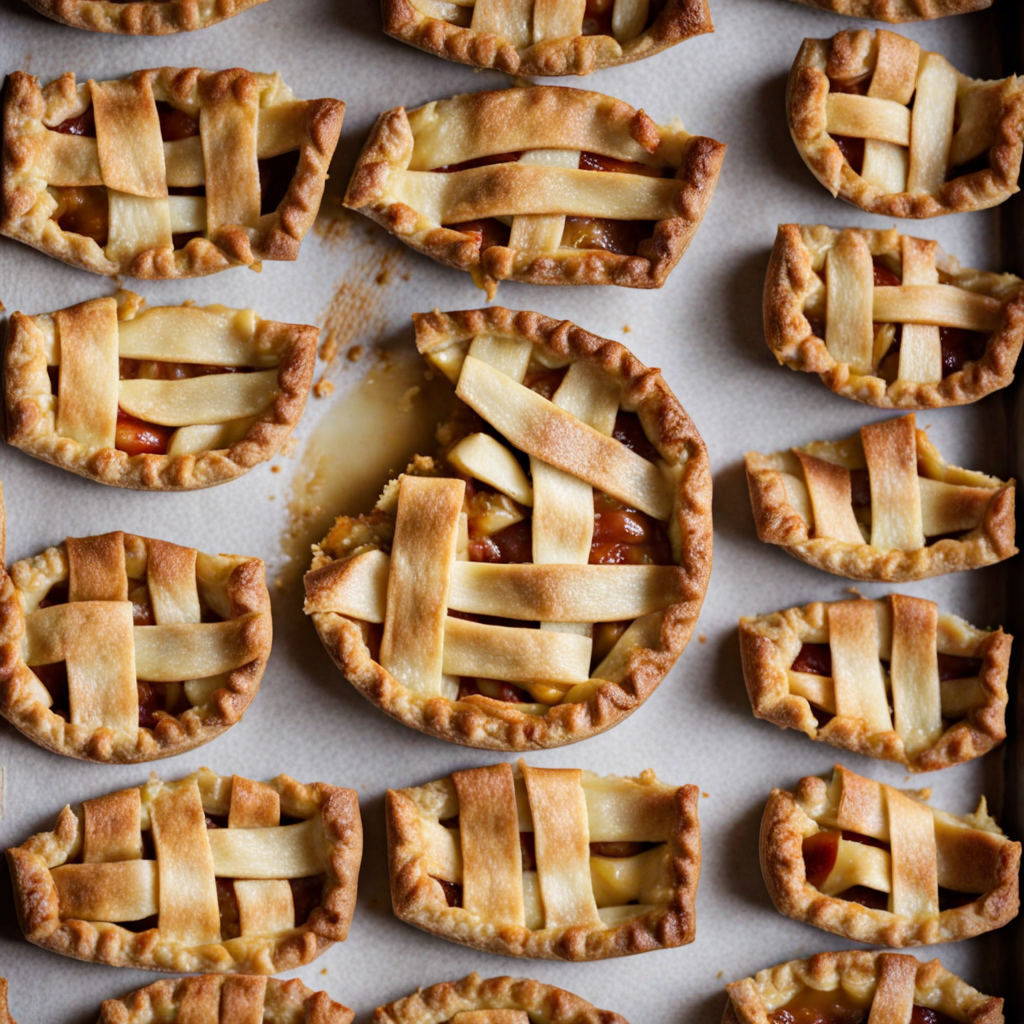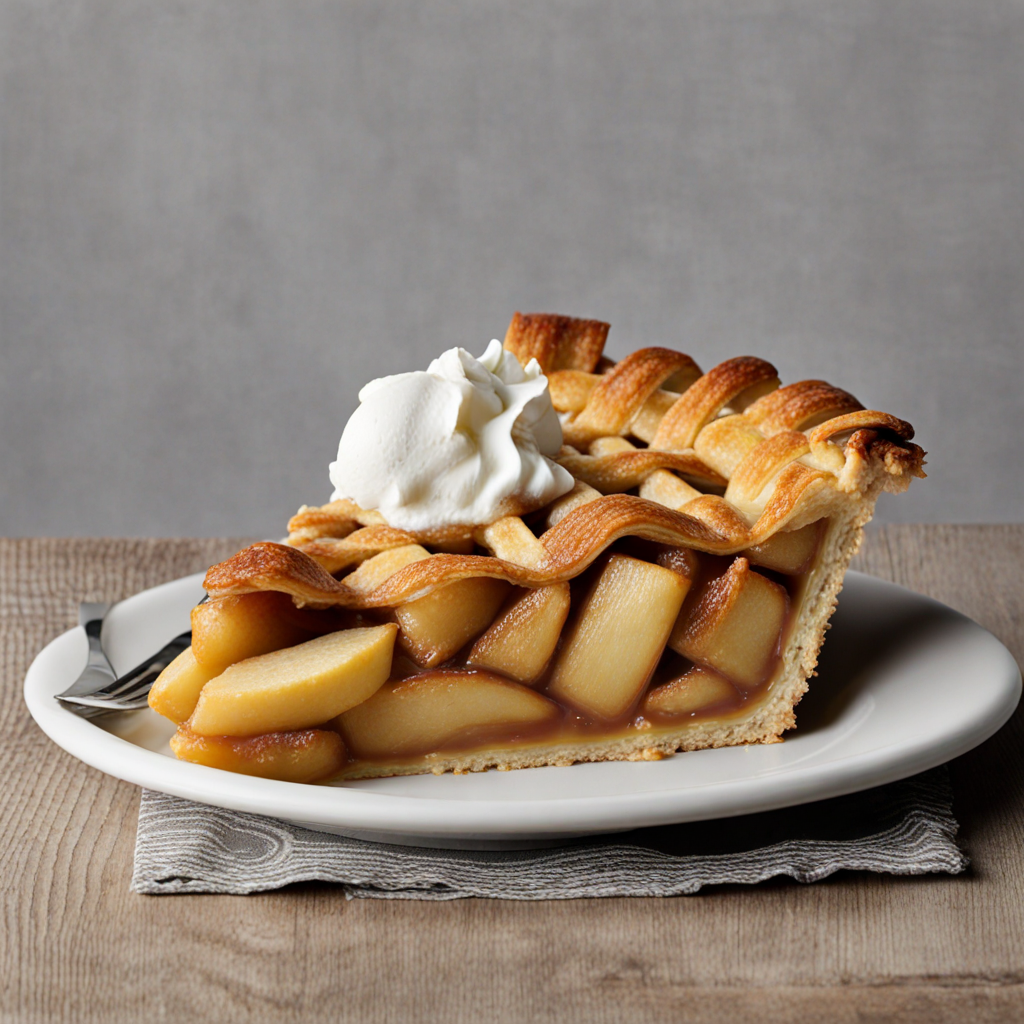Appeltaart
Appeltaart, a quintessential Dutch dessert, embodies the heartwarming essence of home baking with its delightful combination of flavors and textures. This traditional apple pie is characterized by its rich, buttery crust that encases a luscious filling made primarily of tart apples, often combined with raisins, cinnamon, and a hint of lemon zest. The crust is typically thick and crumbly, providing a satisfying contrast to the soft, sweet, and slightly spiced apple filling that melts in your mouth, creating a comforting experience with every bite. What sets Appeltaart apart from its more widely known counterparts is the use of specific varieties of apples, such as Granny Smith or Jonagold, which lend the pie a perfect balance of sweetness and tartness. The addition of spices like cinnamon and nutmeg enhances the overall flavor profile, transporting you to a cozy Dutch kitchen filled with the warm aroma of baked apples. Often served with a dollop of whipped cream or a scoop of vanilla ice cream, this dessert is not just a treat; it's an invitation to savor the simple pleasures of life and the joy of sharing a meal with loved ones. Appeltaart is more than just a dessert; it’s a cultural staple in the Netherlands, often enjoyed during celebrations or as a comforting afternoon snack with coffee or tea. Whether enjoyed at a family gathering, a local bakery, or a quaint café, each slice of Appeltaart tells a story of tradition and craftsmanship. The experience of tasting this pie is not just about its flavor but also about embracing the warmth of Dutch hospitality, making it a must-try for anyone looking to explore new culinary delights.
How It Became This Dish
The History of Appeltaart: A Slice of Dutch Heritage The Appeltaart, or Dutch apple pie, is much more than a dessert; it is a culinary emblem of the Netherlands, steeped in history and cultural significance. Its origins trace back centuries, with roots deeply intertwined with the agricultural landscape of the region and the evolving tastes of its people. Origins The history of Appeltaart can be traced back to the Middle Ages. Early versions of apple pie appeared in various forms across Europe, but it was the Dutch who made it their own. Historical records suggest that the first references to apple pie in the Netherlands date back to the 15th century, during a time when apples were among the most commonly grown fruits in the region. The fruit's widespread availability made it a favored ingredient in many dishes, including pies. In these early recipes, the pie was often filled with a mixture of apples, sugar, and spices, encased in a simple pastry crust. The use of spices such as cinnamon and nutmeg reflected the expanding trade routes of the time, which introduced exotic flavors to the European palate. Though the pies were initially rustic, intended for sustenance rather than presentation, they laid the groundwork for the Appeltaart we know today. Cultural Significance Appeltaart holds a special place in Dutch culture, symbolizing comfort, home, and celebration. It is commonly served at family gatherings, birthdays, and special occasions, where it is often accompanied by whipped cream or vanilla ice cream. The pie serves not just as a dessert but as a centerpiece that brings people together. In the Netherlands, the act of baking and sharing Appeltaart is a cherished tradition passed down through generations. Many families have their own treasured recipes, each with unique twists that reflect personal preferences and regional nuances. For example, some bakers may incorporate raisins, nuts, or even a splash of lemon juice into their filling, while others might top their pies with a crumbly streusel or lattice crust. The Appeltaart is also symbolic of the Dutch ethos of simplicity and quality. The ingredients are straightforward—apples, sugar, butter, flour, and spices—yet the combination results in a dish that is both humble and indulgent. This mirrors the broader Dutch culinary philosophy, which emphasizes fresh, seasonal produce and straightforward preparation methods. Development Over Time As the centuries progressed, the Appeltaart evolved, reflecting changes in society, technology, and culinary trends. The 18th century saw the emergence of more refined recipes as the Netherlands experienced a cultural flourishing during the Dutch Golden Age. The bourgeois class began to embrace pastry-making, and the Appeltaart became a staple in patisseries, where it was presented with greater care and artistry. During the 19th century, as the Industrial Revolution brought about significant advancements in baking technology, the accessibility of ingredients increased. This democratization of baking allowed more households to experiment with their own versions of Appeltaart. Cookbooks published in the late 1800s and early 1900s began to feature standardized recipes, making it easier for home cooks to replicate the beloved pie. The 20th century brought further innovations. The introduction of pre-made pastry crusts in the mid-1900s revolutionized the preparation of Appeltaart, allowing busy families to enjoy the dish without spending hours in the kitchen. This shift reflected broader societal changes, as more women entered the workforce, leading to a demand for quicker meal solutions. In contemporary times, Appeltaart has gained international recognition, often being featured in Dutch-themed restaurants and cafés around the world. The traditional recipe continues to be celebrated, but modern twists have emerged, with variations that incorporate new flavors and techniques. Some bakers experiment with gluten-free options, while others explore vegan alternatives, adapting the classic dish to suit contemporary dietary preferences. The Modern Appeltaart: A Culinary Icon Today, the Appeltaart is recognized as a national treasure of the Netherlands. It is so beloved that the Dutch celebrate "National Appeltaart Day" on the first Saturday of October, a day dedicated to enjoying and sharing apple pie. Bakeries across the country participate in this celebration, often holding contests to see who can create the most delicious or innovative version of the classic dessert. In addition to its status as a beloved dessert, Appeltaart has also become a symbol of Dutch hospitality. Offering a slice of Appeltaart to guests is seen as a warm and welcoming gesture, reflecting the Dutch value of gezelligheid, which encompasses coziness and togetherness. In many households, the preparation of Appeltaart is a family affair, with children involved in peeling apples and rolling out dough, creating lasting memories and bonding moments. Conclusion The journey of Appeltaart from its humble origins to its status as a cherished Dutch icon illustrates the evolution of culinary traditions in response to cultural and societal changes. It is a testament to the Dutch ability to embrace simplicity while celebrating the richness of their agricultural heritage. Each slice tells a story—of family, tradition, and the enduring joy of sharing good food with loved ones. As the world continues to evolve, so too will the Appeltaart, adapting to new tastes and preferences while remaining grounded in its rich history. Whether enjoyed in a cozy café in Amsterdam or baked at home for a family gathering, the Appeltaart remains a delicious reminder of the warmth and hospitality that define Dutch culture.
You may like
Discover local flavors from Netherlands







